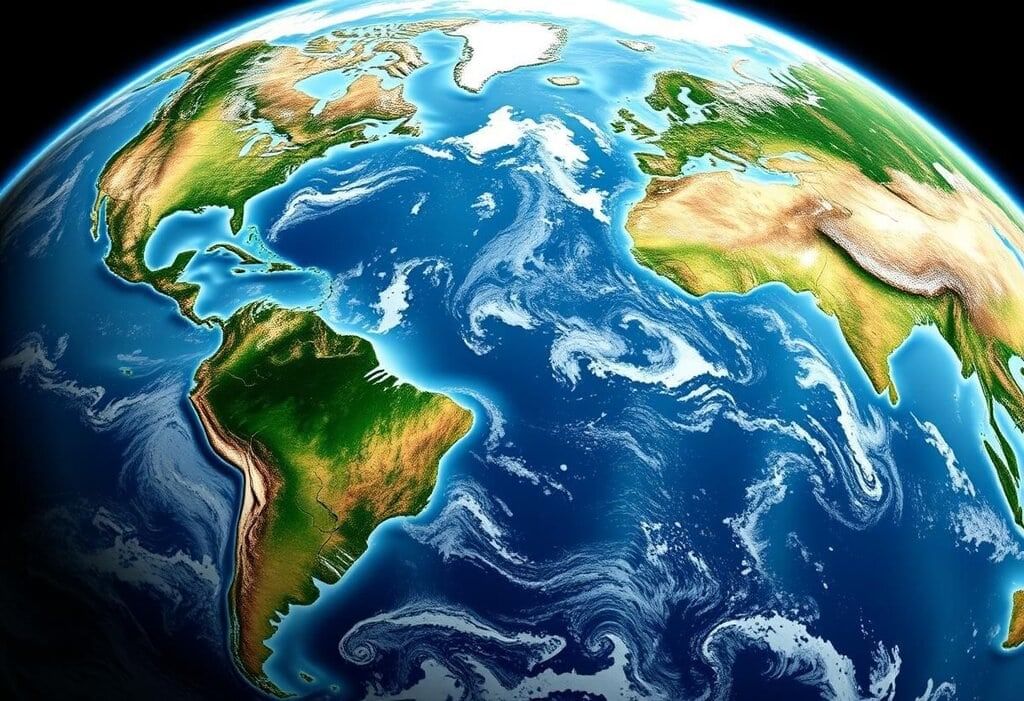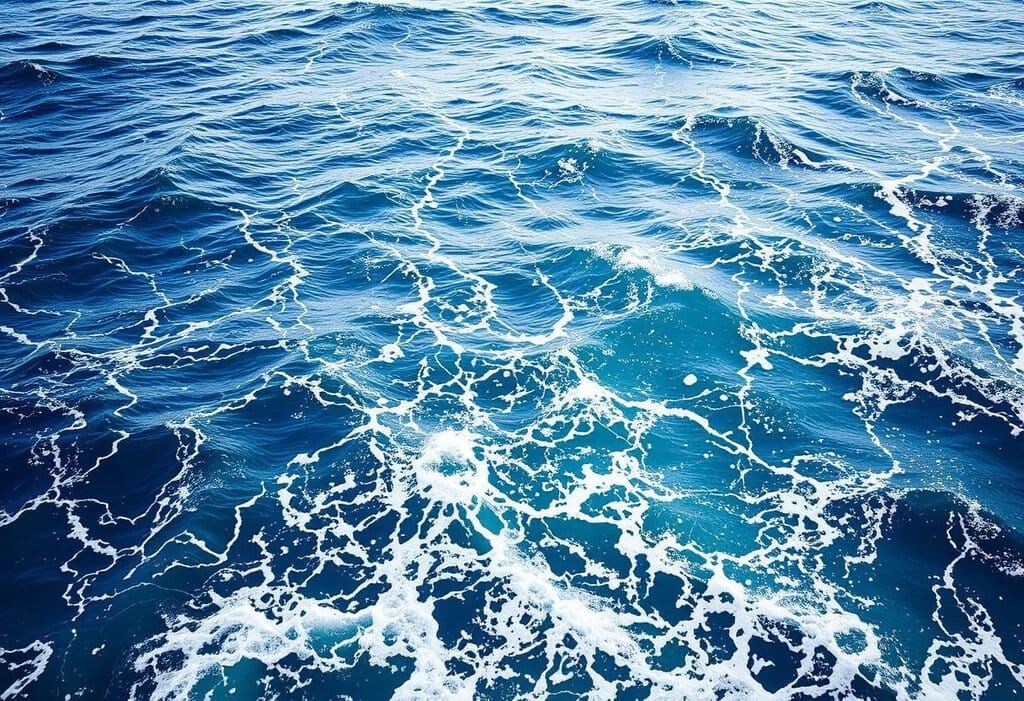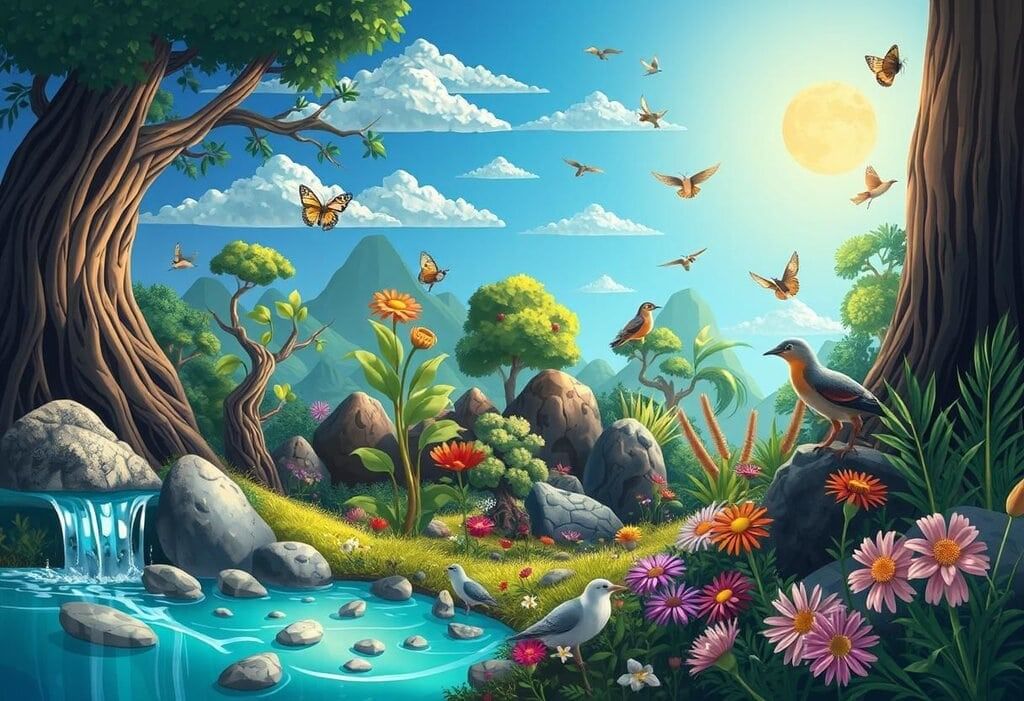Class 6 Exam > Class 6 Notes > Class 6 All Subjects (Old NCERT) > NCERT Summary: Major Domains of the Earth
Major Domains of the Earth Summary Class 6 Social Science Chapter 5
| Table of contents |

|
| Lithosphere |

|
| Continents |

|
| Hydrosphere |

|
| Oceans |

|
| Atmosphere |

|
| Biosphere |

|
The surface of the earth is a complex zone. It can be divided into three main portions, viz. lithosphere, atmosphere and hydrosphere.
Lithosphere

- The solid portion of the earth is called the lithosphere.
- It is composed of rocks from the earth’s crust.
- There is a thin layer of soil on top that contains mineral nutrients that sustain various organisms.
- The earth’s surface can be divided into two main parts, viz. the continents and the ocean basins.
(i) Continents: The huge landmasses on the earth are called continents.
(ii) Ocean Basins: The huge water bodies on the earth are called ocean basins.
Continents
- There are seven continents and all of them are separated by large water bodies. The seven continents of the world are; Asia, Europe, Africa, North America, South America, Australia and Antarctica.
- Asia: This is the largest continent. Asia covers about one-third of the total land area of the earth. This continent lies in the eastern hemisphere.
- Europe: Europe lies to the west of Asia and is much smaller than Asia. It is bound by water bodies from three sides.
- Africa: Africa is the second largest continent. The major portion of Africa lies in the northern hemisphere.
- Australia: This is the smallest continent. It lies entirely in the southern hemisphere. Since Australia is surrounded on all sides by ocean hence it is called the island continent.
- Antarctica: This is a huge continent and is present on the South Polar Region. In fact, the South Pole lies at the centre of this continent.
- North America: It is the third largest continent. North America and South America are connected to each other by the Isthmus of Panama.
- South America: A major portion of South America is in the southern hemisphere. This continent is surrounded by two oceans, viz. the Atlantic and Pacific oceans.
- Isthmus: A narrow strip of land that joins two landmasses is called the isthmus. North America lies in the northern hemisphere and western hemisphere.
Hydrosphere

More than 71% of the Earth’s surface is covered with water. But 97% of the total water on earth is available as saline water in oceans and seas.
Oceans
- All the oceans of the world are connected to each other. Due to this, the level of sea water is same everywhere. Elevation of land is measured from the sea level and the sea level is taken as zero.
- Waves, tides and ocean currents are the three main movements of ocean water. There are five major oceans, viz. Pacific, Atlantic, Indian, Arctic and Southern oceans.
- Pacific Ocean: This is the largest ocean. It is almost circular in shape. The Pacific Ocean is surrounded by Asia, Australia, North America and South America.
- Atlantic Ocean: This is the second largest ocean. It is S-shaped. North America and South America are to the west of this ocean. Europe and Africa are on the east of this ocean.
- Indian Ocean: Indian Ocean is the only ocean to be named after a country. This ocean is almost triangular in shape. Asia is towards north, Africa is towards west and Australia is towards east of this ocean.
- Southern Ocean: This Ocean encircles Antarctica. It extends northwards up to 60oS latitude.
- Arctic Ocean: This Ocean is within the Arctic Circle. It surrounds the North Pole. It is bound by the northern coasts of North America and Eurasia.
Atmosphere

- Atmosphere plays an important role in the environment on earth.
- Atmosphere is made of air which is composed of many gases, water vapour and dust particles.
- Composition of Air: Air is mainly composed of nitrogen and oxygen. 78% of the air is composed of nitrogen, 21% is composed of oxygen, and the rest, 1%, is composed of carbon dioxide, argon, and many other gases.
- Role of Nitrogen: Nitrogen is important for plants because plants make many important molecules from nitrogen.
- Role of Oxygen: Oxygen is required by living beings for respiration. Moreover, oxygen is also required for burning various fuels.
- Role of Carbon Dioxide: Carbon dioxide is utilized by plants during photosynthesis. You may recall that photosynthesis is the process by which plants make food.
Layers of Atmosphere
- The atmosphere can be divided into many layers.
- The troposphere is at the bottom. This is followed by the stratosphere, mesosphere, thermosphere, and exosphere.
- The density of the atmosphere changes with height. Air is at maximum density at sea level and becomes rarer as we go higher.
- Humans are comfortable while breathing under normal pressure. When the atmospheric pressure becomes low, it becomes difficult to breathe.
- Atmospheric pressure is very low at high mountains. Due to this, mountaineers need to carry oxygen cylinders so that they can breathe comfortably at high altitude. The difference in pressure also plays a role in wind movements.
- Air moves from high pressure to low pressure. Moving air is called wind.
Biosphere

- The narrow zone of contact between the lithosphere, hydrosphere, and atmosphere is called biosphere.
- Life exists in this zone. A variety of organisms exist on earth. All the living beings are linked to each other for their survival. They are also linked to various non-living things for their survival.
The document Major Domains of the Earth Summary Class 6 Social Science Chapter 5 is a part of the Class 6 Course Class 6 All Subjects (Old NCERT).
All you need of Class 6 at this link: Class 6
|
297 videos|1066 docs|204 tests
|
FAQs on Major Domains of the Earth Summary Class 6 Social Science Chapter 5
| 1. What are the major domains of the Earth? |  |
Ans. The major domains of the Earth are the lithosphere, hydrosphere, atmosphere, and biosphere. The lithosphere refers to the solid outer layer of the Earth, consisting of the crust and upper mantle. The hydrosphere includes all water bodies on Earth, such as oceans, rivers, lakes, and groundwater. The atmosphere is the layer of gases surrounding the Earth, responsible for weather and climate. The biosphere comprises all living organisms and their interactions with the other domains.
| 2. What is the role of the lithosphere in the Earth's domains? |  |
Ans. The lithosphere plays a crucial role in the Earth's domains as it is the solid outer layer that provides a habitat for various living organisms. It is where landforms are formed, such as mountains, plains, and plateaus. The lithosphere also interacts with the other domains. For example, it influences the hydrosphere through the formation of rivers and lakes, and it affects the atmosphere through processes like weathering and erosion.
| 3. How does the hydrosphere contribute to the Earth's domains? |  |
Ans. The hydrosphere is essential for the Earth's domains as it covers about 71% of the planet's surface. It provides a habitat for numerous aquatic organisms and supports various ecosystems. The hydrosphere also plays a vital role in regulating the Earth's climate by absorbing and releasing heat, influencing weather patterns, and acting as a carbon sink. Additionally, it interacts with the lithosphere through the erosion of landforms and the deposition of sediment.
| 4. What is the significance of the atmosphere in the Earth's domains? |  |
Ans. The atmosphere is of great importance in the Earth's domains as it sustains life by providing oxygen and regulating the climate. It consists of different layers, each with distinct characteristics and functions. The atmosphere protects the Earth from harmful solar radiation, controls the temperature by trapping heat, and circulates moisture through the hydrological cycle. It also interacts with the other domains, such as the lithosphere through weathering and the hydrosphere through the water cycle.
| 5. How does the biosphere contribute to the Earth's domains? |  |
Ans. The biosphere is a crucial domain of the Earth as it includes all living organisms and their interactions with the other domains. It supports diverse ecosystems and plays a vital role in the cycling of nutrients and energy. The biosphere influences the atmosphere through processes like photosynthesis, which produces oxygen and reduces carbon dioxide levels. It also interacts with the lithosphere through the formation of soils and the hydrosphere through the presence of aquatic organisms.
Related Searches




















